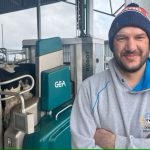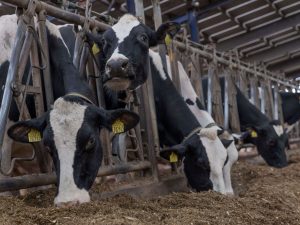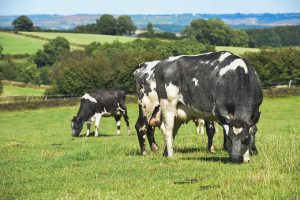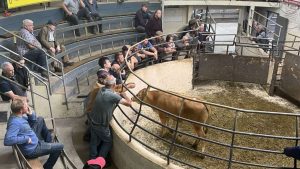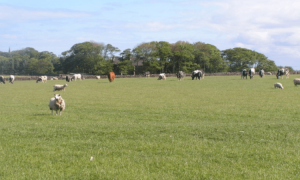
DNA information collected at birth can now be used to detect chromosomal abnormalities in livestock, helping avoid the costs and challenges of rearing infertile cattle.
Chromosomal abnormalities in humans, such as having an extra or a missing chromosome, are known to cause various genetic disorders – many of which significantly impact health, development, and reproduction.
For example, Down syndrome – caused by an extra copy of chromosome 21 – leads to developmental delays, characteristic physical features and an increased risk of various health conditions. Similarly, Turner syndrome – which is caused by a missing X-chromosome in females – can cause short stature, heart defects and infertility, among other complications.
These types of chromosomal abnormalities are not limited to humans; they can also occur in livestock and generally result in infertility or the animal dying prematurely. However, animals with chromosomal abnormalities often appear normal externally, so their genetic condition typically goes unnoticed until they are either found dead or are eventually deemed infertile.
A novel strategy
Cliona Ryan, a post-doctoral researcher at Teagasc Moorepark, explains that the traditional method to detect chromosomal abnormalities is known as karyotyping.
“Karyotyping involves taking a blood sample from an animal, staining the chromosomes to make them visible, and then analysing the number and structure of the chromosomes under a microscope. Karyotyping is a labour-intensive process and costs approximately €60 per animal.”
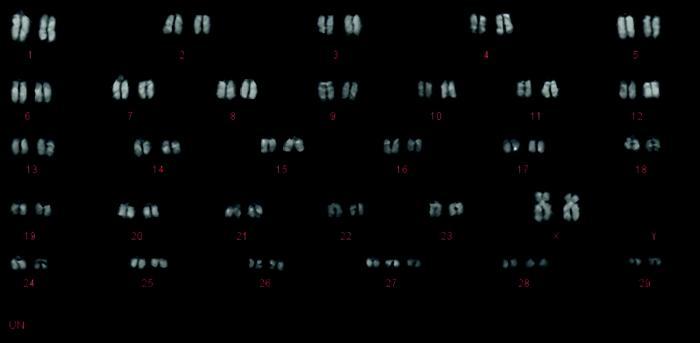
However, researchers at Teagasc Moorepark have pioneered a novel strategy. By using existing DNA profiles from the national cattle genotyping scheme, it’s now possible to detect the number of chromosomes per animal at no additional cost to the farmer.
“Chromosomal duplications and deletions were detected by quantifying how much DNA was present for each chromosome in each genotyped animal,” Cliona explains.
“This means researchers compared the actual amount of DNA for each chromosome to what is normally expected. If extra DNA was present for a specific chromosome then it indicated that the animal might have an extra copy of that chromosome. If less DNA was present for a specific chromosome, then the animal might be missing a copy of that chromosome.”
Proactive detection
This newly developed, novel methodology was validated by collecting blood samples from animals suspected of having an additional or missing chromosome. The samples were analysed using karyotyping, with the number of chromosomes examined under a microscope, which allowed the researchers to confirm the suspected chromosomal abnormalities.
The cost-saving implications of this methodology are significant, continues Cliona.
“Given that one cytogenetic analysis – i.e. the examination of chromosomes to determine chromosome abnormalities – costs approximately €60, a whole-population screening of cattle in Ireland to identify affected individuals would cost €150 million annually – based on a figure of 2.5 million calves born per year. Specifically, for young bulls in Ireland that will potentially be used for artificial insemination, the karyotype testing costs approximately €600,000 annually.”
However, affected individuals can be identified using their already available genotype information. This is due to the algorithms developed from this research being deployed by the Irish Cattle Breeding Federation to screen animals that are genotyped at birth, as part of the national genotyping scheme. This means that potential chromosomal abnormalities can be identified at no additional cost and very early in the animals’ lives, allowing for proactive management decisions.
Assessing the impact
Using a comprehensive database of almost 800,000 Irish cattle genotyped under 15 months of age, the incidence of chromosomal duplications or deletions in Ireland was 0.062%. The incidence of chromosomal abnormalities has not been previously reported in any cattle population globally.
None of the females identified with a missing X-chromosome (indicative of Turner syndrome) produced offspring, nor did any males with an extra X-chromosome (indicative of Klinefelter syndrome), as they were likely infertile. Among the 139 cattle detected with an extra autosome (i.e., non-sex chromosomes), which is a condition similar to Down syndrome in humans, 61% died prematurely on farm. The karyotype of a dairy heifer with an extra autosome can be seen in Figure 1.
“Although the prevalence of chromosomal duplications or deletions in the Irish cattle population is relatively low, any identified cases – whether on sex chromosomes or autosomes – are likely to have notable financial repercussions,” explains Cliona.
The techniques developed by Teagasc researchers for identifying chromosomal duplications and deletions are not limited to cattle; similar chromosomal abnormalities have now also been identified in Irish sheep and horses.
“This methodology may have potentially far-reaching, positive implications for genotyping, breeding and culling across a range of livestock,” Cliona concludes. “By detecting issues at birth, farmers can make informed decisions about breeding and culling.”
This research is funded by the Department of Agriculture, Food and the Marine; Science Foundation Ireland; and Science Foundation Ireland’s VistaMilk research centre.
Contributors
- Cliona Ryan, Post-doctoral Researcher, Teagasc Moorepark, Fermoy, Co. Cork. cliona.ryan@teagasc.ie
- Donagh Berry, Senior Principal Research Officer, Teagasc Moorepark, Fermoy, Co. Cork.
You can now read the most important #news on #eDairyNews #Whatsapp channels!!!
🇺🇸 eDairy News INGLÊS: https://whatsapp.com/channel/0029VaKsjzGDTkJyIN6hcP1K

